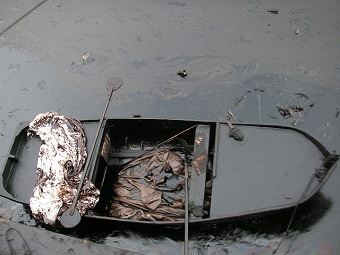Demands made for better oil spill clean-up technology
 Oil spills may cost firms involved a fortune and increasing scarcity of the resource may cost the consumer, but one area of the industry may benefit — the technology used to clean up accidental spills.
Oil spills may cost firms involved a fortune and increasing scarcity of the resource may cost the consumer, but one area of the industry may benefit — the technology used to clean up accidental spills.Reuters reports that technology has barely advanced from the 1989 Exxon Valdez oil spill, which spread 750,000 barrels of oil into the Alaskan sea. Scientists have struggled to find more effective ways to clean up the environment after a large oil spill, but so far, little progress has been made.
This fact means that as oil companies go further afield to find fresh oil resources — going so far as Antartica in the attempt — if an oil rig fails, vast and irreparable damage could be caused to the environment, as well as losing what little oil reserves we have left.
After a major incident, for example BP PLC’s 2010 oil spill, which sent X barrels of oil spilling into the X, effort to improve the technology we possess to combat these disasters increases. However, once enthusiasm fades, we are left in the same position as before — simply waiting for the next oil rig to fail.
There are a number of developments being made by scientists. Researchers hailing from Pennsylvania State University have created a gel which absorbs 40 times its own weight and separates water from crude, and nanotechnology is also being implemented in other projects through the production of lightweight sponges that enjoy soaking up oil but hate water.
Although oil companies make an effort to prevent such incidents — as it hits their wallets hard when they do — it could be argued that when crossing into harsh and remote environments, more effort should be made to keep cleanup technology cutting edge.
The more dangerous an environment, the more risk there is of something going wrong. In the end though, it’s generally up to oil companies themselves, government officials and the economy that decides just how much emphasis is placed on research and development.
You can return to the main Market News page, or press the Back button on your browser.

